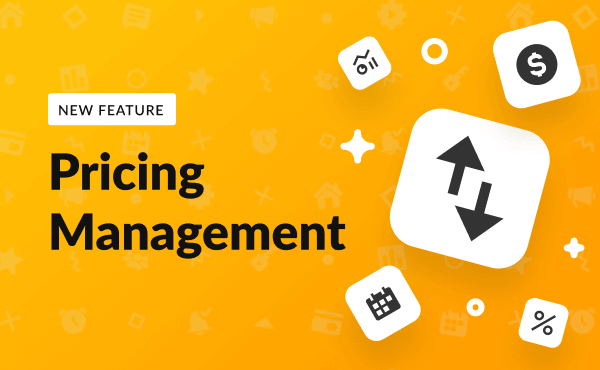Profitable Vacation Rentals: Calculating NOI in Real Estate

When it comes to investing your money in properties for vacation rentals, it is important to research the market and be fully aware of the risks involved. While a successful investment may take your business to the next level, a flop could mean loads of debt and an empty house.
Of course, there are no guarantees that your investment will pay off, but there are several ways you can assess the risk. Some real estate formulas — like NOI — will help you estimate the degree of risk posed by your investment.
Read on to understand what NOI in real estate is, how to calculate it, and what it can be used for.

What Is NOI?
The Net Operating Income (NOI) is a financial indicator that is used to analyze the profitability of real estate investments. It equals all revenue generated by the property, minus all necessary operating expenses. Therefore, NOI in real estate is like a financial health certificate for a property.
In other words, NOI will indicate to real estate investors if the rental income generated from the property is worth the cost.
It is important to note that Net Operating Income is a pre-tax number on the income statement and it excludes loan interest payments, capital expenditures, depreciation, and amortization. Thus, it is possible to understand why many real estate investors consider NOI as a “synonym” for EBITDA (Earnings Before Interest, Taxes, Depreciation, and Amortization) since they have several similarities.
How to Calculate NOI
The Net Operating Income formula is perhaps one of the easiest equations for the property owner to understand. After all, to get to a company’s NOI, simply subtract operating expenses from the Gross Operating Revenue that was generated.
So, we have the following equation for calculating Net Operating Income:
Net Operating Income = Gross Operating Income – Operating Expenses
Gross Operating Income
It means the total rental income generated from renting out your property. You need to know, however, that this number will fluctuate based on market decisions and property management.
To calculate NOI accurately, first, you need to calculate your Gross Operating Income (GOI):
Gross Operating Income = Potential Rental Income – Vacancy Rate
Potential Rental Income (PRI) is how much you’d make if the property was leased 100% of the time. This number is easy to find because real estate investors often think in terms of the “best-case scenario”.
It would be great if a rental property was completely leased, but this isn’t likely. This is why GOI factors in vacancy and credit losses against potential rental income.
If you are a beginner host, you might find it difficult to calculate how much you can with Airbnb or VRBO. Your potential earnings will vary depending on location, seasonality, maximum occupancy, etc.
While there is no correct answer, you can use an Airbnb calculator to help estimate your potential income and determine if you will have enough return on your investment. It will uncover current and future market trends and show how much you could be earning.
Regarding expenses, NOI considers:
Rental operating expenses affect the daily operations of your business and are necessary to manage a rental property. These will include:
- Property management fees
- Taxes
- Water/sewage
- Electricity
- Marketing costs
- Insurance costs
- Utilities
- Repairs, and
- Maintenance.
What is not included in NOI calculations:
When calculating NOI in real estate, it is necessary to differentiate between property-related costs and real estate investor-specific costs. We shall not include ongoing costs that are not related to the operation of the rental property, such as:
- Mortgage payments and interest
- Personal income taxes
- Leasing commissions
- Management fees
- Capital expenditures
- Debt service
- Depreciation
- Tenant upgrades
- Investment costs
- One-time repairs for wear & tear.
Net Operating Income Example
Let’s use a single-family rental as an example of NOI. Their potential rental income is $10,000. If the vacancy rate is $500, the effective rental income would be $9,500.
Let’s also say the operating expenses total $2,500 and the property taxes $1,000. Then, the total expenses would be $3,500.
According to the Net Operating Income formula, NOI would be $9,500 – $3,500, which equals $6,000.

Which Factors Impact NOI?
Real estate NOI should not be the only measure used to determine whether a property is a good investment or not. Some other factors may affect the property’s Net Operating Income, such as location, the status of the local market, and available capital.
The location will dictate the demand for your property, the market value, and the traffic around your house. You should also take into account the competition in the local market, which will impact your occupancy rate.
Plus, the more capital you invest in your property, the better your potential return on investment will be. Also, pay attention to the market’s growth potential: if your real estate market is experiencing growth, it will impact your property and NOI.
What Is the Purpose of Calculating NOI?
As seen, NOI is an important financial indicator for anyone thinking of investing in real estate, as it can determine the potential of a property to generate revenue.
If the property is mortgaged, Net Operating Income (NOI) is also useful information. In this case, the real estate investor will be able to find out whether the revenue generated is sufficient to cover operating expenses in addition to paying the debt.
Without analyzing it, an investor runs the risk of investing his capital in an enterprise that does not bring any profitability, and may even cause losses. In addition, by using NOI, it is possible to compare the revenue of different properties and assess the fair value of properties — a technique known as valuation. This way, a real estate investor will be able to make decisions based on the property with the greatest potential for return or greater value.
Disadvantages of NOI
Real estate NOI also comes with some disadvantages.
For example, it does not take the quality of management into account, and this is a key factor in rental income generation. While some property owners are better at minimizing repairs and dealing with tenant issues, others may lack those skills, and operating costs will be higher.
Cap Rate and NOI
It is worth mentioning that NOI is not the only financial indicator that can be used to measure a real estate investment. There are other real estate calculations to take into account, such as the Capitalization Rate.
You can think of “cap rate” as a synonym for return on investment (ROI) but it’s used widely in the real estate sphere. Cap Rate and NOI are linked formulas in the vacation rental industry:
Capitalization Rate = Net Operating Income ÷ Current Market Value X 100
By calculating this rate, it is possible to understand the investment’s ability to generate results and compare it to other property investment opportunities. It indicates the return capacity of a real estate asset.
The idea behind the cap rate is to know how much an investment is capable of yielding on how much it is worth, considering a certain period. A higher cap rate indicates that a real estate investment tends to be more profitable, which leads to a potential accumulation of results. A low cap rate, on the other hand, might mean that the investment is not that interesting.
What Is a Good NOI and Cap Rate?
The real answer is it depends.
There is no baseline for “good” NOI because it varies greatly. Naturally, the higher the net operating income (NOI), the better your profitability will be.
A good way to understand if your NOI is good is if you compare it to other properties in the area. That comparison can offer insight into whether you’re spending too much or too little on operating costs or charging enough rent.
And, we have the same answer for the Cap Rate in real estate: it also depends!
Even though a good cap rate hovers around 8% to 12% (in expensive cities it may go lower), this is not the only factor in determining if a vacation rental investment is right for you. You also need to consider cash flow, property location, and type, for instance.
Therefore, it’s important to maximize your potential rental income while you keep the costs low. And, the best way to achieve this is by using vacation rental automation software.
With iGMS, you can automate your vacation rentals and streamline your daily hosting tasks that take up most of your time. Thus, you will be able to focus on tasks that will help grow your business and provide effective rental income.

How to Improve Your NOI
NOI in real estate is something you can improve upon. Consider the following suggestions for getting above your local NOI average:
1) Reduce your variable costs
NOI benchmarks operational efficiency and helps identify areas for improvement in your vacation rental operations. A simple way to turn NOI into a powerful expense management tool is to track variable costs as a percentage of revenue.
There are expenses you can influence such as the use of linen and cleaning supplies. You can control them on a daily basis.
By tracking these variable costs as a percentage of revenue, you can easily see trends and catch runaway costs before they become problematic and reduce your NOI. For the most precise control over expenses, monitor your NOI daily so you can adjust operations in real-time and keep your finger on the pulse of profitability.
2) Increase your occupancy rate
Of course, increased revenue also has a positive impact on NOI. After all, you can only cut expenses so far because every property has fixed overhead costs.
And can cutting costs aggressively negatively impact the guest experience? Be careful not to end up making it difficult to maintain the desired occupancy levels.
Work closely with revenue management and marketing to create compelling campaigns that target the right people. That means you’re not just discounting rates in search of occupancy. You are carefully marketing your property to attract the best guests who pay rates that don’t compromise your pricing power.
3) Reduce labor costs
You can reduce labor costs by increasing the productivity of your employees. Automating routine tasks and using technology to increase efficiency can reduce the amount you spend on wages.
iGMS vacation rental software can supercharge your management by:
- Managing multiple accounts and listings in a single interface
- Synchronizing reservations across multiple platforms to get rid of double-bookings
- Automating messaging and organizing your chats into a single feed
- Automating guest reviews
- Helping you build a stunning website with the website builder
- Sharing daily cleaning schedules with your cleaners and auto-assigning cleaning tasks
- Creating reports on performance and results and analyzing your business growth on an interactive Dashboard
4) Save water and energy
Anything from water-saving toilets and low-flow shower heads to faucet aerators and LED light bulbs can minimize monthly utility bills for your property — and improve your NOI.
Frequently Asked Questions
1) Is NOI yearly or monthly?
NOI is calculated on an annual basis. That means that each number that forms part of the formula must be worked out on a yearly basis.
2) Should we include the mortgage in NOI?
No, we calculate NOI as if the property had been paid for in cash. Therefore, mortgage payments or rental property loans are not included in the calculation.
3) Is EBIT the same as NOI?
NOI determines a property’s revenue less all necessary operating expenses. It doesn’t take interest, property taxes, capital expenditures, depreciation, or amortization expenses into account. Conversely, earnings before interest and taxes (EBIT) consist of revenues minus expenses, excluding taxes and interest. However, it does take depreciation and amortization expenses into account.
EBIT is a formula used by companies to measure profitability, taking into account more expenses than NOI.
4) Is EBITDA the same as NOI?
NOI primarily is mostly used for analyzing how profitable a commercial or residential investment would be. On the other hand, EBITDA looks into the profitability of a business or company. NOI’s formula accounts for revenue lost to vacancies and EBITDA does not do this.
5) What is the difference between Net Income and Net Operating Income?
Net operating income is revenue less all operating expenses while net income is revenue less all expenses, including operating expenses and non-operating expenses, such as property taxes.
Final thoughts
NOI calculates how profitable a potential investment property is in a single year by subtracting total annual expenses from your property’s income. While it is not foolproof, it is useful when property owners or real estate investors need to make decisions.
To make sure you can maintain a cash flow, streamline your operations with vacation rental software to save time and money. iGMS will put your vacation rental business on autopilot.





![Your Monthly iGMS Roundup [February 2020]](/content/images/size/w600/wordpress/2020/02/igms-roundup-feb-2020-cover.png)

